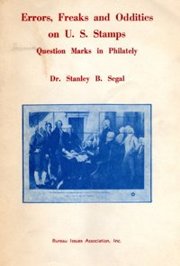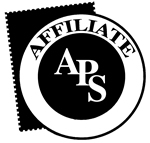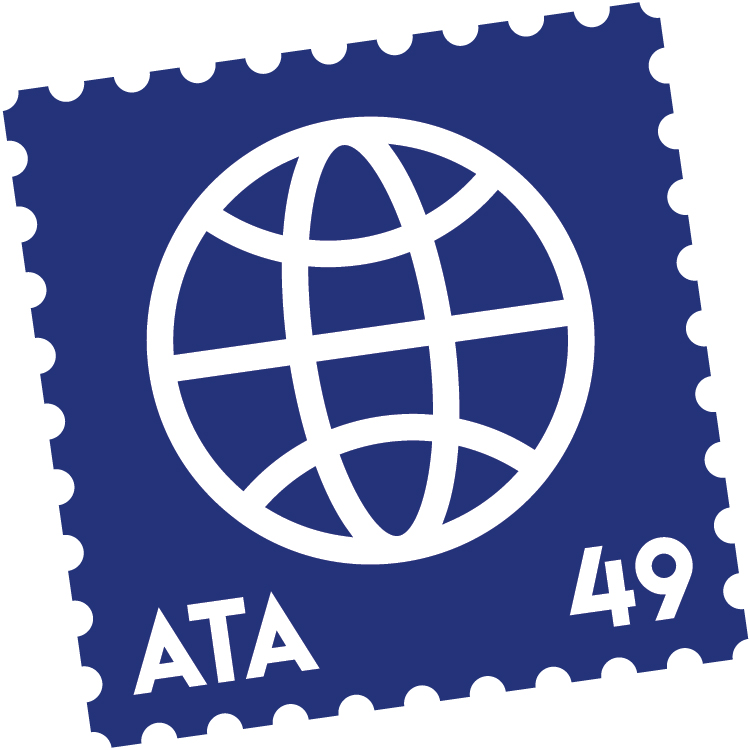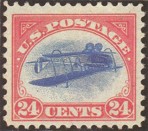
EFOCC Home
Resources
The EFO
Collector
Collector
Auction
Honor Roll
EFOCC History
Club Business
Membership
Buyers/Sellers
Service Providers
Service Providers
Member Login

EFOS for Sale
 |
| APS Affiliate #103 |
 |
 |
| ATA Chapter #94 |
| Click here for a printer friendly version of this essay. |
Introduction
Errors, Freaks and Oddities, popularly called EFOs, are the riffraff of philately. Or they can be considered great treasures, depending upon the attitude of the collector speaking. To some, they are simply defective material, no more useful or interesting than a car that doesn't work correctly, and just as infuriating. To others, it is material that exists in only small quantities, illustrates what can go wrong in the production process, and takes the collector a step beyond the printed album page to a higher level of challenge and understanding.In earlier days, collectors gathered EFOs to dress up their traditional collections. EFO material was mounted on supplemental pages, along with interesting cancellations and other varieties. In more recent years, EFO collecting has become a respected specialty with its own national society, literature, and specialty dealers and auctioneers.
Material included under the EFO category, and within each subdivision, is covered in this essay. Here are some elementary definitions for newcomers to the field:
Errors are total mistakes: no perforations, colors completely missing, or full stamps on either side of an interpane gutter. They are often given catalog listings.
Freaks, also called "varieties" or "minor errors" by some, represent production problems that are partial or not exactly repeatable, such as paper creases, misperforations or partially missing colors.
Errors will sometimes be found within freak pieces. For instance, a paper fold (freak) may result in a miscut booklet pane containing a pair of stamps that are imperforate between (error). Or an ink fountain on a press may have run dry, depositing a minimal amount of ink on one row of stamps (freaks) and none on the adjoining row (error).
Oddities as a class include unusual variations stemming from stamp designing through the preproduction process, and even cancellation varieties. They may be normal for what they are, but tend to be found in small quantities and are of special interest because of their properties.
The first question noncollectors are likely to ask a collector is: "Do you have one of those upside-down airplane stamps?" Of course, for the most part, they will be joking, but a collector will certainly mean it if s/he answers, "No, but I wish I did!"
The fact is that few collectors can afford the $100,000 or so it takes to add a pristine copy of Scott C3a to a collection. But anyone can own eye-popping errors and freaks that cost less than $100. It's just a matter of knowing where to look.
The first place is at the post office. Considering that the U.S. Postal Service issues more than 40 billion stamps a year and retails them through 40,000 post offices, it should not be a surprise that flawed stamps reach the public.
Every printing process has waste. The equipment has to start and stop. Because the printing process has become more automated and complex, more things can go wrong. And, of course, there is the human factor: Do something late, out of sequence, or not at all, and the result is flawed printing. It's a wonder there isn't more error and freak material on the market.
Is "99.9 percent perfect" an acceptable quality level? That's a standard that even security printers can't reach. If that standard were applied in the real world, 22,000 checks would be deducted from the wrong bank accounts every hour, 12 babies would be given to the wrong parents each day and 315 words defined in Webster's Third New International Dictionary of the English Language would be misspelled.
So, look carefully at stamps bought at the post office, from vending machines or at the supermarket checkout counter. And be alert for the person in line who is returning defective stamps and wants to trade them in "for good ones." It happens.
The next place to look is in old stamp collections - both albums and accumulations. It is amazing what has passed through many hands and before many eyes without being appreciated for what it is. This is true for many areas of the hobby but especially for EFOs.
The key is to learn about what exists. For special areas of interest, it is worthwhile to go through Scott and other catalogs and note the listed errors. The exercise gives an appreciation of color errors, perforation varieties, bicolor inverts and other flaws. Collectors who have a list in hand have a distinct advantage when visiting dealers' tables at shows or when looking at society circuit books and at auction lots. No one, including dealers, can know everything about every stamp.
There is also a brisk trade in EFOs that have been identified by others. Increasingly, dealers and auctioneers are seeking EFO material and including it in their offerings. A few well-known dealers and auctioneers aggressively advertise themselves as EFO specialists, and new discoveries and established collections tend to flow to them.
Looking at an auction catalog from Jacques C. Schiff Jr. might leave the impression that a huge amount of EFO material is in the marketplace. What it really means is that Schiff was a pioneer in this field and has built up a serious client base that generates bids. The result is that he consistently has a large EFO section in his auctions.
Those interested in buying and selling EFOs can find advertisements of EFO dealers and auctioneers in the major stamp weeklies and in many other philatelic publications.
They can also learn more about EFOs and how the EFO marketplace works by joining the EFO Collectors' Club, an affiliate member of the American Philatelic Society, which also has its own quarterly auction for members. For information, write to Stan Raugh, Secretary, EFO Collectors' Club, 4217 8th Avenue, Temple, PA 19560.
What follows is a listing of the various types of EFOs with an emphasis on U.S. material. The list has been developed by Linn's U.S. Notes columnist John M. Hotchner. A few explanatory notes and value concepts are provided for each category. There is no way to be comprehensive for all examples in each category or over the entire world. Thus these notes will include only one or two examples from U.S. philately for the most part. Valuation of EFOs is complicated. The best references are current catalogue listings and auction realizations. The value notations here are general. Actual value may increase or decrease based upon factors such as condition (exceptional, or minor flaw) the relative complexity and "visualness" of the item, and the subject content of the design. With regard to the latter, popular themes (space, baseball, etc.) will tend to push the price up.
Bear in mind that any group from these listings can be collected as a specialty, or a collector can try to obtain an example from each group. Some EFO collectors restrict their collecting to specific stamps, issues or eras. Others simply accumulate and enjoy whatever comes their way, with no particular rhyme or reason.
There is no right or wrong way. Whatever the method, your satisfaction is the only thing that counts.

Only 100 copies of the 1918 24¢ inverted Jenny error (Scott C3a) reached the public.
| Previous: Cover | Introduction | Next: Errors |
| Table of Contents |
John M. Hotchner
Errors, Freaks & Oddities
The EFO Collector
The Archives
John M. Hotchner
EFO Corner
The Columns
from Linn's
from Linn's
Articles By
Wayne Youngblood
AG
Files
Ryskamp
on
Computer-Vended Postage
Not
quite
EFOs